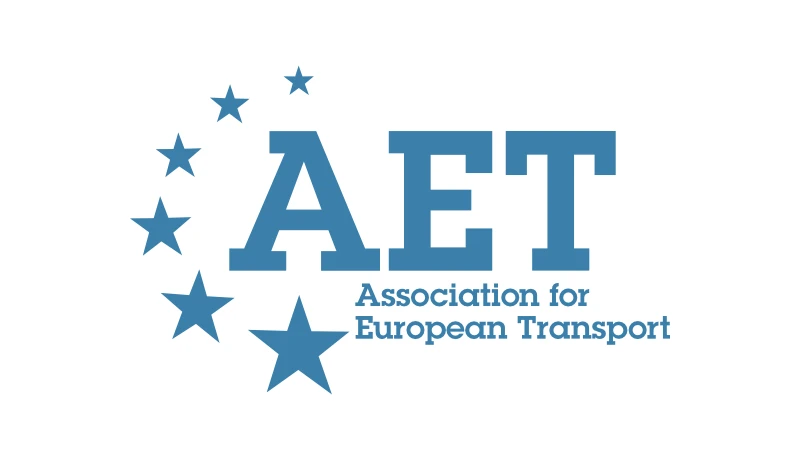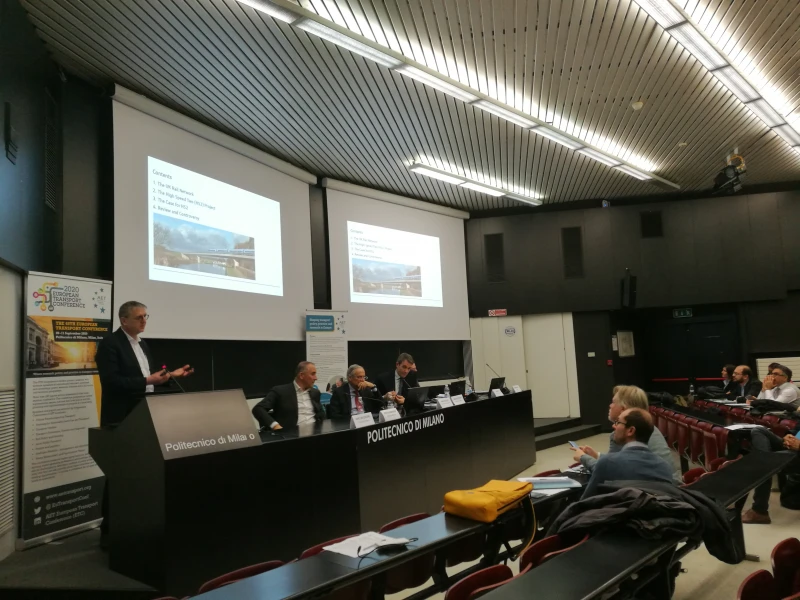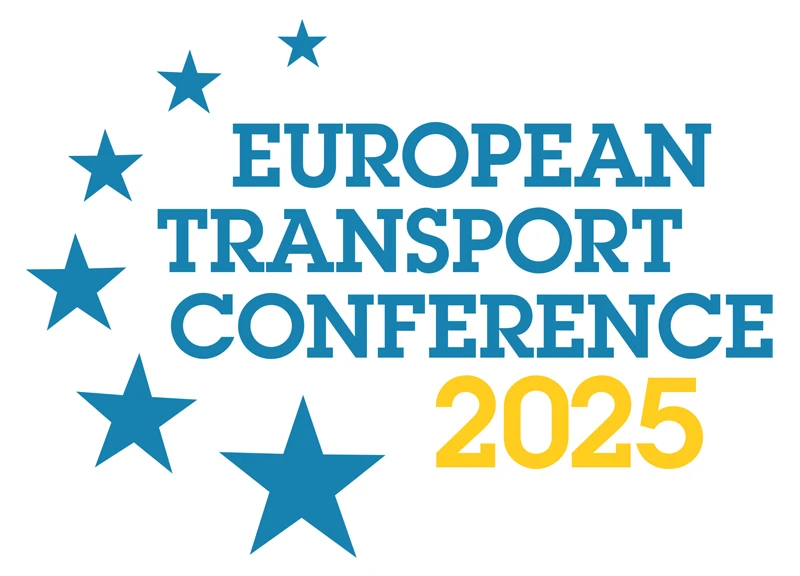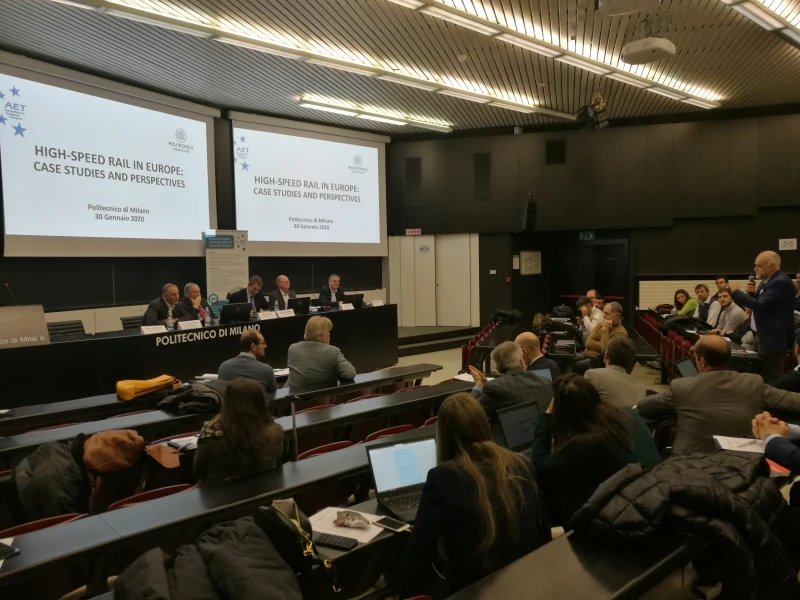-
Past ETC Papers
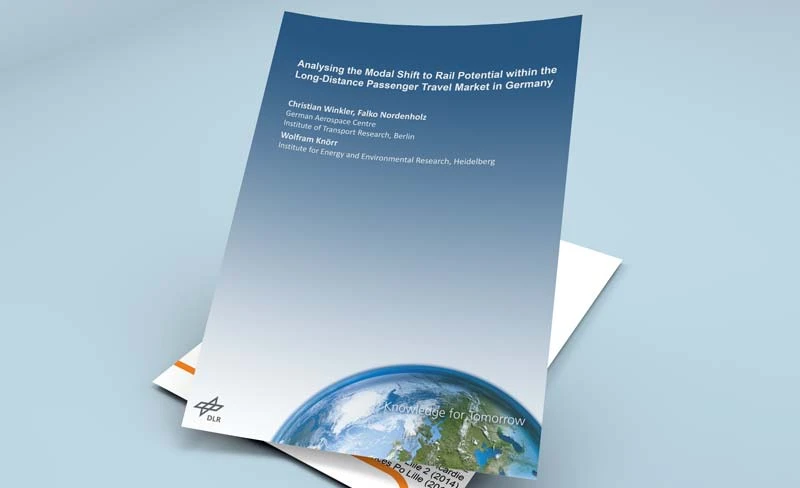
Browse, search and view papers from the past AET Conferences.
-
Members' Area
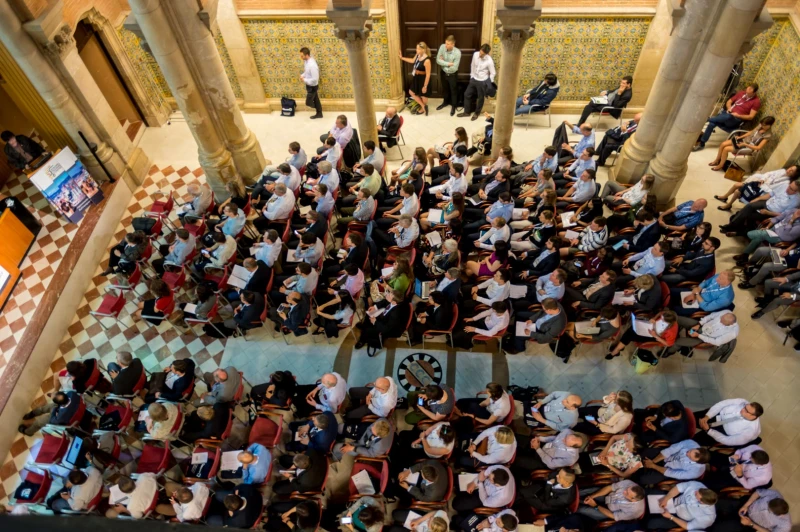
AET promotes networking and exchange of ideas, information and opportunities amongst members.
Conference Papers 2013
Frankfurt, Germany
ETC Conference Papers 2013
A logical framework and integrated architecture for the rail maintenance automation
Seminar
Day 2 (1 Oct 2013), Session 4, Rail Policy and Planning, 19:00 - 22:00
Status
Accepted, documents submitted
Authors
F.G. Benitez, University Of Sevilla, F. Cores, University Of Sevilla, N. Jiménez-Redondo, CEMOSA
Short abstract
ACEM-Rail is a project funded by the European VIIFP for the organization and control of the maintenance of railway infrastructure.
The project aims the development of new technologies for the automation of the maintenance management with the goal of reducing costs, time and resources required for maintenance activities and, therefore increasing the availability of infrastructure.
Abstract
F. Cores, N. Caceres, F.G. Benitez, University of Sevilla, Spain
S. Escriba, N. Jiménez-Redondo, CEMOSA, Málaga, Spain.
The maintenance of the railway infrastructure is a complex process that represents a significant percentage of total railway infrastructure costs. The state of infrastructure depends on many factors such as the characteristics and age of the elements, the track geometry, topography and geology, weather conditions or supporting loads. Furthermore, the maintenance operations involve the track occupation that requires the planning and coordination of rail activities in order to minimize the disruption of train services.
Finally, the maintenance management based on cyclical works and on corrective maintenance entails high costs in both resources reliability and availability of infrastructure. The ability of knowing the conditions of the track and predict their evolution would allow to fit the maintenance management to a model based on conditions/predictions. This will help those responsible for making decisions to achieve optimal maintenance plans that minimize the maintenance costs, ensure a satisfactory safety margin and prevent quick degradation of track quality.
ACEM-Rail is a project funded by the European VIIFP for the organization and control of the maintenance of railway infrastructure.
The project aims the development of new technologies for the automation of the maintenance management with the goal of reducing costs, time and resources required for maintenance activities and, therefore increasing the availability of infrastructure.
ACEM-Rail project is based on five pillars: i) development of several technologies for the automated and cost effective inspection of
the track (some of them on-board of commercial trains), ii) development of algorithms for assessing the state of the infrastructure and
estimating the evolution of defects, iii) development of optimization algorithms and techniques for planning and scheduling the
maintenance tasks in short, mid and long term, iv) development of an effective Infrastructure Management Subsystem that supports
the decision-making process and is responsible of the management of the railways maintenance, v) development of technologies and tools for monitoring the proper execution of maintenance tasks.
In this paper we set the focus on the ACEM-Rail IMS (Infrastructure Management Subsystem). This system is a modular architecture built as a composition the project subsystems (algorithms and data) with software specialized in the management of assets maintenance. The main component of the system is a commercial CMMS (Computerized Maintenance Management System) that implements LAM (linear asset management) that allows the “dynamic segmentation” of the line, permitting to specify attributes and features along the railway lines. This system also allows the definition of “Linear relationships” indicating intersections, parallel or
grade crossing of linear assets.
In ACEM-Rail, the railway infrastructure is decomposed into track segments that represent the smallest unit to be treated. These assets are characterized with the information required for the automation of management like classification and hierarchy, track composition, geometry, speed, breaking degree, etc. The train services are included into the system in order to provide with information about the operation in the railway network, availability time windows for maintenance and loads over the infrastructure.
This database receives automated information about the state of the track and the location of warnings with its corresponding defect
type and severity level. The warnings can be generated by the inspection sensors, the maintenance technician or by the preventive
maintenance planning. These warnings are managed by the PMU (Process Management Unit) that determines the workflow that is
required for maintenance of each problem. The system provides with different workflows depending on the detection system, the
defect type, the location and the severity level. A warning may require a visual inspection to determine the type and severity of a
defect, can require periodic inspections to have control on the degradation process or may need a corrective maintenance operation.
A generic workflow for corrective maintenance consists of the following steps: i) the system estimates the degradation of the defect
and calculates the current and future maintenance costs, ii) this information, in combination with the availability of maintenance
resources and time, is used by tactical planning algorithms to generate the optimal maintenance plan for the overall railway infrastructure, iii) the system generates automatic work orders to correct the defects that are planned for the next weeks and keeps the rest of warnings until the next tactical planning execution, iv) the system manages the life cycle of work orders until the defect is corrected.
Documents:

Association For
European Transport
Forester House
Doctors Lane
Henley-in-Arden
Warwickshire, UK
B95 5AW
+44 (0) 15 64 793552
VAT number: 710 1866 64
Conference Supporters & Endorsers




Legal Entity
The Association for European Transport is registered as an Association ('vereniging') with the Chamber of Commerce for Haaglanden in The Netherlands under company number 27170096.
Built on Zenario

